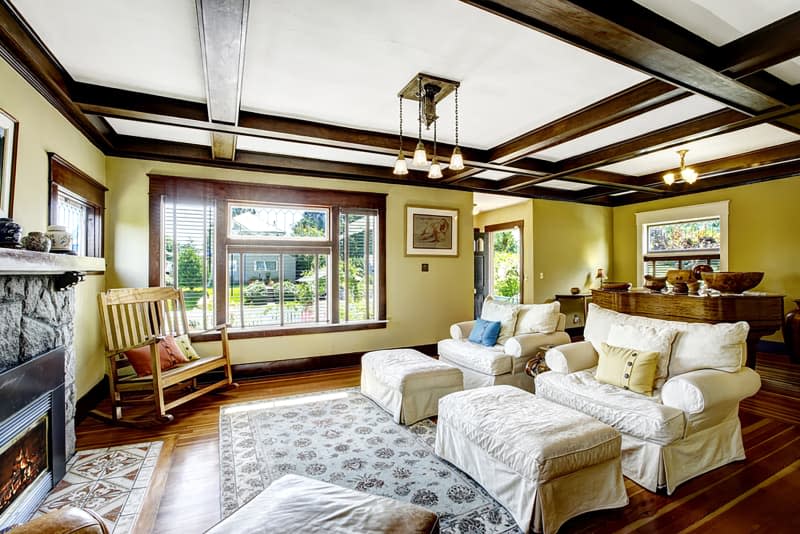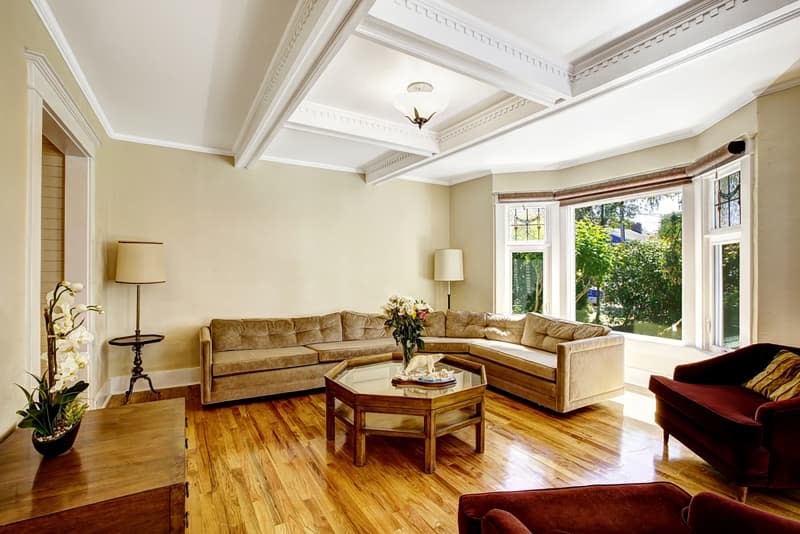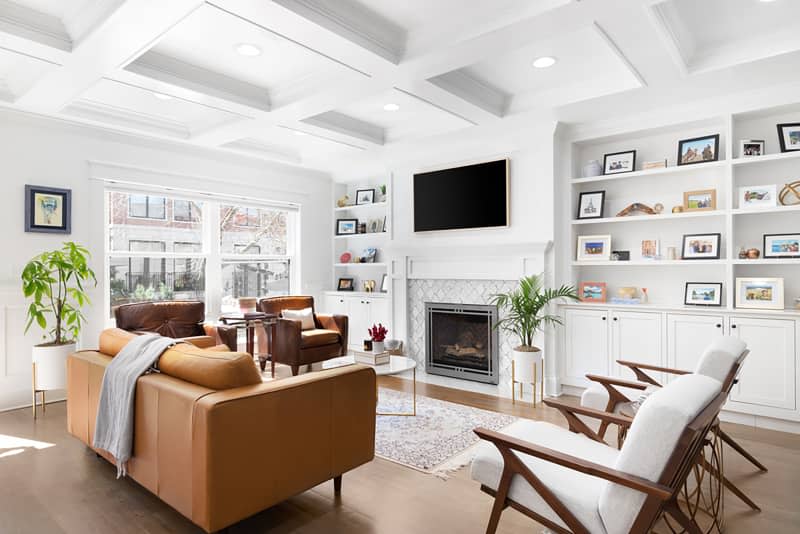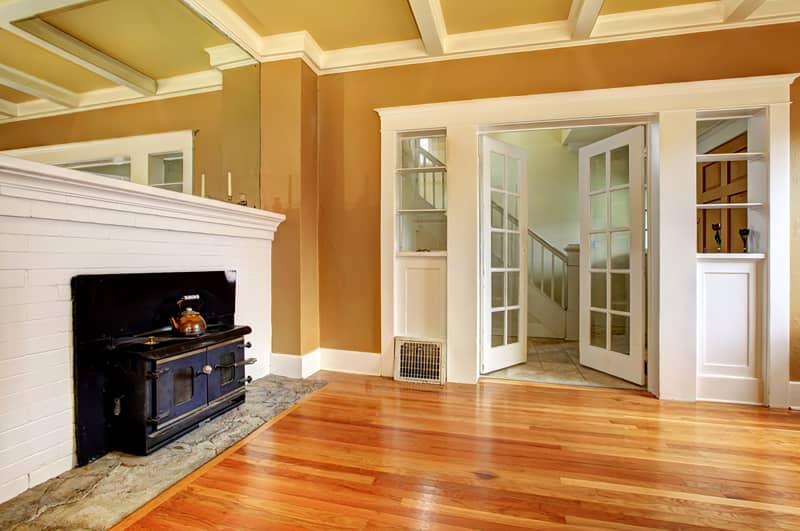What Is a Coffered Ceiling, and How Is It Different from a Tray Ceiling?

No one wants to live in a blank box. While the idea may be appealing during a construction phase, the reality of living in a space without any architectural features can quickly turn dull. Certain flourishes — like picture frame molding or decorative millwork — can give four walls and a roof dimension and personality. And one architectural detail that should arguably be on wish lists more often is a coffered ceiling.
What Is a Coffered Ceiling?
“A coffered ceiling is a classic detail, and almost resembles a recessed 3D grid,” says designer Sarah Sherman Samuel. These typically feature beams arranged into square or rectangle configurations, which create the effect of indented panels and instantly add visual interest to any ceiling.
At a time when design enthusiasts are embracing styles reminiscent of the past — as seen with the rise of limewashing walls, shopping at estate sales, and decorating with vintage finds — a coffered ceiling has the potential to be yet another example of how old meets new. The best part is that they’re surprisingly versatile, so your home doesn’t have to automatically feel like a sophisticated library (unless you want it to!).
“Coffered ceilings are a fairly simple way to treat a ceiling with an incredibly impactful result,” adds Malorie Goldberg, a partner at Noa Blake Design. “They can be made more traditional or modern by the size and shape of the boxes and the profiles of the decorative trim within them, offering a lot of possibilities to make it feel like it aligns well with the character of the home.”
Coffered Ceiling vs. Tray Ceiling
While you may be more familiar with tray ceilings, a coffered ceiling shouldn’t be confused as one. “A tray ceiling is a single box that is created by building a soffit around the perimeter of the room, also creating the appearance of a recessed ceiling,” Goldberg says. A coffered ceiling, on the other hand, is more ornate, with multiple smaller depressions vs. just one.
What to Know About Coffered Ceilings
If you’re interested in incorporating timeless architectural features into your home, but you’d rather try something new besides trendy archways, a coffered ceiling may be worth your consideration. Here’s what you need to know about them.

A coffered ceiling is a historical touchpoint.
Once you can identify a coffered ceiling, there’s a good chance you’ll be able to spot them in a number of historic structures. “The most famous coffered ceiling in the world is inside of the Pantheon in Rome, which was built in AD 125 and still going strong,” says architect Nicholas Potts. “A coffered ceiling is generally broken up into multiple gridded panels, ostensibly for structural reasons, and that one brilliantly lightened the weight of the heavy concrete structure of the dome.”
Elsewhere, Potts says that coffered ceilings have been used everywhere from Japan to New England, and can punctuate either ornate drawing rooms or Brutalist spaces. “It has a usefulness in that it’s a lightweight ceiling that can also create texture and shadow on a surface that’s often ignored,” he continues. “It fully embraces the ‘fifth wall’ of a room.”

A living room is usually the preferred location for a coffered ceiling.
While bedrooms and common areas can all benefit from a coffered ceiling, if she had to pick, Samuel would most likely install a coffered ceiling in a living room. “It’s usually one of the largest rooms in the house and can make it feel cozy,” she says. “And practically speaking, it muffles sound.”
Potts agrees, and notes that this effect works well in regular designs where walls may need help appearing taller. “Because they were developed as a way of lightening the load of long-span structures, coffered ceilings almost always look best in horizontal spaces, or in a multifunctional room that could use some structural order superimposed on it,” he says. “When they’re highly decorative, coffered ceilings are also a natural for ‘high finish’ public rooms such as dining rooms and foyers.”

A coffered ceiling can be neutral or colorful.
It may seem as though a coffered ceiling is best for traditional, buttoned-up homes, but don’t cross it off your list if you prefer modern and colorful spaces. “We often paint a coffered ceiling in a dark jewel tone to create a richer feel,” Goldberg suggests.
Nevertheless, if you’re a minimalist at heart, a coffered ceiling is still for you. “Because there is so much texture, this is a rare instance where I might default to a white palette to allow the maximum amount of shadows to fall across the ceiling,” Potts says. “But coffered ceilings can also look amazing in a high-gloss finish or in wood.”
Goldberg recommends keeping light fixtures minimal on a coffered ceiling so that there isn’t an abundance of attention up top, whereas Samuel would approach the room like this: “I would install drapery at the ceiling height to draw the eyes up. I haven’t done a colorful coffered ceiling yet, but would love to do a pop of color to add to the drama.” Either way, a coffered ceiling can accommodate your ideas so that your home feels far from being a blank box.

